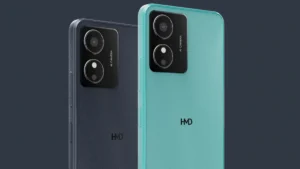Quantum computing is taking a giant leap forward. Google’s revolutionary Willow quantum chip reveals its latest development. These cutting-edge advancements in this kind of technology reflect outstanding superiority in error correction, rapid computation, and scalability and have marked a critical point for this stage of quantum evolution. Dive into the details of what Willow means for the future.
What’s So Big About Willow Quantum Chip?
Willow is unique with two distinct accomplishments that distinguish it from its predecessors:
1. Reduced Errors While Scaling
One of the biggest challenges of quantum computing is that error increases exponentially with the increase in the number of qubits. Willow addresses this challenge by using advanced quantum error correction techniques, reducing errors exponentially-a goal pursued by researchers for decades. This makes the quantum systems more accurate and reliable as they scale up in complexity.
2. Unprecedented Speed
Willow has been shown to compute things at speeds impossible for a classical supercomputer. For example, the most complex benchmark task, which would take the fastest classical machine ten septillion years to solve, took Willow five minutes to solve. To give this some perspective, that is longer than the universe has existed in its current form.
Why Errors Matter in Willow quantum chip Computing
Qubits, quantum computing’s fundamental unit, are very sensitive and quickly lose information. This instability has been a significant barrier effectively effectively scaling quantum computers.
How Willow Overcomes This Challenge
The Quantum AI team of Google has significantly contributed to error correction. In the experiment, using a grid of qubits from 3×3 up to 7×7, the team demonstrated that the errors exponentially decreased with the increase in system scale. Therefore, this would open up practical applications for quantum computing because the performance will be reliable and scalable.
Testing Willow’s Capabilities: The Random Circuit Sampling Benchmark
Researchers used the Random Circuit Sampling (RCS) benchmark, a standard test to determine if a quantum computer can do things that classical systems cannot. Willow performed well, demonstrating tasks practically impossible for classical computers to accomplish within any practical timeframe.
Built for Excellence and Future Applications
Improved Qubit Performance
The 105 qubits are optimized to maximize both quality and quantity. A key metric for evaluating quantum chips is T1 time, the length of time a qubit maintains its quantum state. Willow has significantly improved this metric, achieving nearly 100 microseconds—five times better than previous generations.
Willow Quantum Chip: Applications Beyond Benchmarks
While Willow’s results in benchmark testing are remarkable, the real potential lies in the real world. From drug discovery to clean energy solutions, Willow could be used to solve problems currently unsolvable with classical computers.
Willow quantum chip: Google’s Vision for Quantum Computing
Google will not stop with Willow’s launch. The company is imagining quantum computing to address some of humanity’s most pressing challenges: climate change, battery optimization, and advancement in artificial intelligence.
Willow Quantum Chip: Reaching Out to Developers and Researchers
To encourage innovation, Google has launched open-source tools and education resources, including a new Coursera course on quantum error correction. Developers and researchers worldwide are invited to contribute to and benefit from the quantum revolution.

FAQs
1. What is Willow, and why is it important?
Willow is Google’s newest quantum chi, designed to push the quantum boundary. It reduces errors exponentially, computes at unprecedented speeds, and sets the stage for scalable and practical quantum systems.
2. How does Willow address quantum error correction?
Willow employs advanced error correction techniques using bits and demonstrations. As the system scalesngit demonstrates error reduction as the system, making quantum computing liable and accurate.
3. What is the benchmark test that Willow passed?
Willow aced the RCS benchmark, solving problems that would take a classical supercomputer ten septillion years to solve in less than five minutes.
4. What are the potential applications of Willow in reality?
Willow’s ability might change the face of drug discovery, clean energy, artificial intelligence, and climate change solutions by being able to solve problems a classical computer cannot.
5. How can developers be involved with quantum computing?
Google offers open-source tools and educational material, including a Coursera course on quantum error correction, through which developers and researchers can develop quantum computing.







Be First to Comment